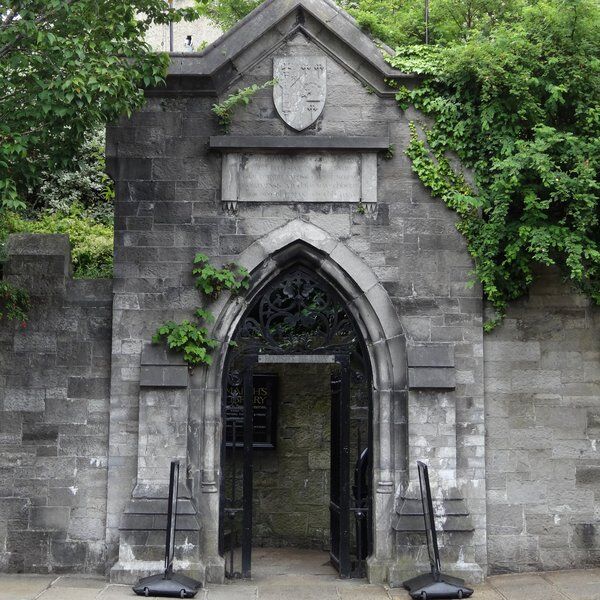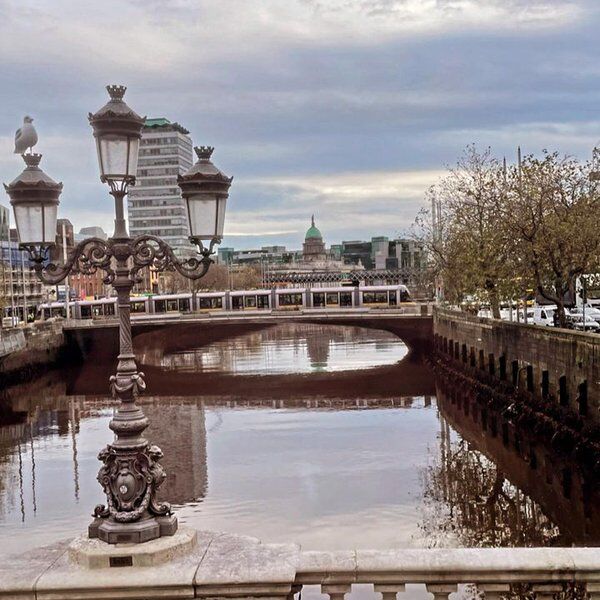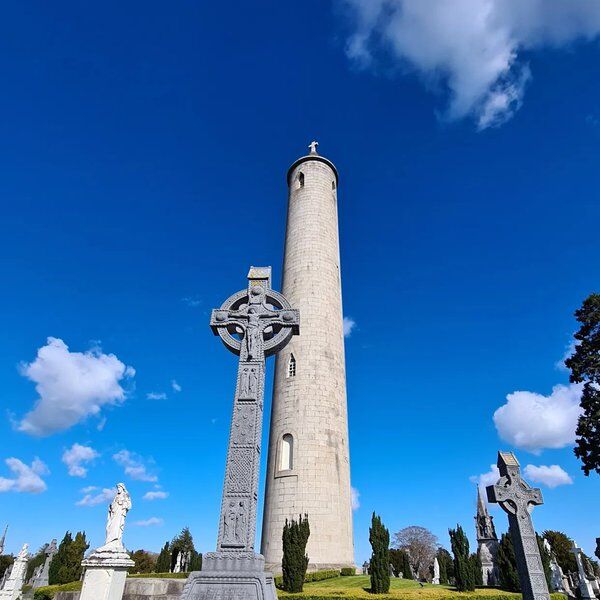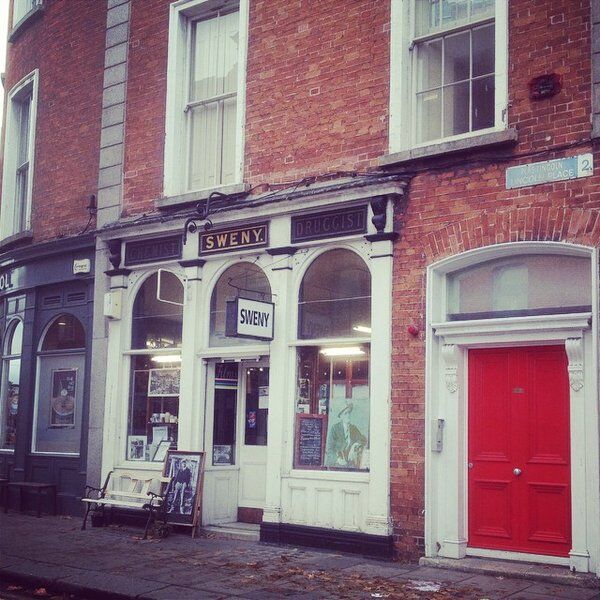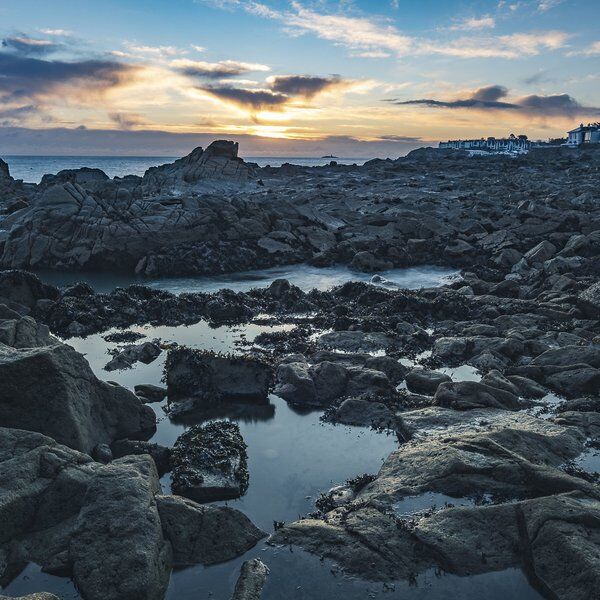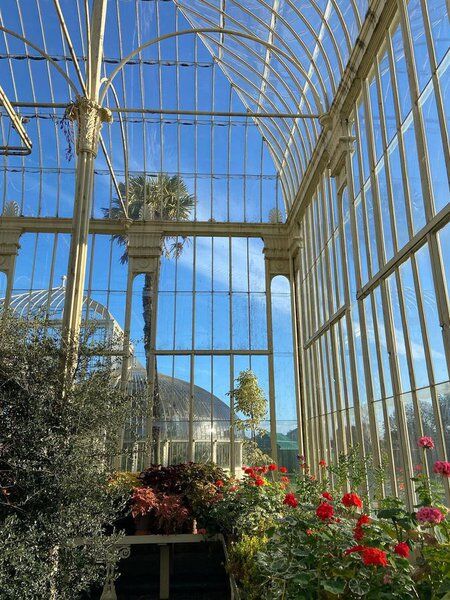
Discover the National Botanic Gardens
Established in Glasnevin, County Dublin, in 1795 the impressive National Botanic Gardens are a thought-provoking haven teeming with plant life and other artefacts.
The Gardens also feature stunning lawns, beautifully restored glasshouses, and other interesting delights. It is even possible to reach Glasnevin Cemetery via a brand-new walkway linking the sites.
The History of the National Botanic Gardens
In 1790, with the support of John Foster, Speaker of the House, the Irish Parliament granted funds to the Dublin Society (now the Royal Dublin Society) to set up a public botanic garden.
Its original purpose was to study agriculture from a scientific perspective. Consequently, in the beginning the Gardens contained plants that could be used for human consumption, medicinal purposes, and dyeing. But it also grew plants that were simply beautiful, or unusual and intriguing.

Within 40 years the agricultural element of the Gardens had been surpassed by the ‘pursuit of botanical knowledge.’ In light of this, plants were gathered from all over the world and put on display at the Gardens.
From here, the basic shape of the Gardens was laid out by Curator and Head Gardener Ninian Niven. A series of winding paths and roads were created, and Niven helped to locate most of the features seen in the Gardens today.
As the collection of plants grew, especially tropical species, which needed increased protection and specific conditions to flourish, Niven’s successor, David Moore, was tasked with developing the historic glasshouses.
Glasshouses at the National Botanic Gardens
The National Botanic Gardens are also famous for their glasshouses. The Curvilinear Range and Great Palm House are both recipients of the Europa Nostra Award for excellence in conservation architecture.
Guided tours of each of the glasshouses are available daily. And if you cannot get to Dublin there are VR (virtual reality) links on their website that allow you to explore them virtually.
Alongside the Teak House, there are six more glasshouses including:

Alpine House
Alpine House and Alpine Yard is home to an ever-changing display of Alpine plants.
Cactus and Succulent House
Also referred to as the ‘Flowering House’ this glass structure is currently being used to store a range of cacti and succulents, whilst their house undergoes reconstruction.
Great Palm House
This particular glasshouse built in 1883 is actually the second edition, after the first was damaged in a storm. It has since undergone even more renovations from 2002-2004.
Orchid House
Orchids were first grown to bloom from seeds by the curator, David Moore, in Glasnevin in the 1840s. Consequently, they are special to Glasnevin and occupy their own glasshouse in the National Botanic Gardens. It was renovated along with the Great Palm House in the early 2000s.
Curvilinear Range
Iron-built, the Curvilinear Range glasshouse has a very distinct, curved roof and is the most important building in the National Botanic Gardens. Its central dome even featured on Irish stamps for many years. In the 1990s it was fully restored by the Office Of Public Works, who remain responsible for the Gardens today.
Within this glasshouse the plant collections have three particular themes:
- The Western Wing is dominated by a collection of Vireya Rhododendrons. The plants were gathered from mountainous areas of South-East Asia including the Philippines, Borneo and New Guinea.
- In the Eastern Wing there is a collection of plants from the Southern Hemisphere continents of South America, South Africa, and Australia. Visitors will notice the strong scents of essential oils, which are contained within the typically thicker leaves of flora from these regions.
Victoria Waterlily House
The Victoria Waterlily House was built in 1854 to house the botanical sensation of the time, the Amazon Waterlily. Seeds were gifted by the Oxford University Botanic Garden and flowered that year. This was met with much acclaim after two previous attempts to grow the plant in Glasnevin in 1849 and 1854, were unsuccessful.
Funds to build the house were raised by charging admission to a horticultural fete at the National Botanic Gardens in June 1853. Unfortunately, because the building has fallen into disrepair and requires renovation, gardeners have been unable to grow the Waterlily in recent years.

The National Botanic Gardens’ Key Features
Alongside the glasshouses the National Botanic Gardens are also home to many other fascinating features.
Sundials
There are two sundials. The more familiar horizontal sundial, situated in front of Palm House, is one of the few dials in Ireland with a timescale graduated in single minutes.
In the Rose Garden, across the Tolka river, lies the other sundial, which is a more modern, armillary style dial. This one uses the sun’s shadow to depict the hour of the day.
The Bandstand
Contrary to its name, the Bandstand was built in 1894 to provide much needed shelter and seating. It would never have actually hosted a band.
The Chaintent
The Chaintent is a circular pergola. It was erected by Niven, a short time after 1834. Today it supports several important Wisteria plants.
Socrates
Two marble figures representing Mercy and Socrates, which had previously been in Iveagh House, St Stephens Green, Dublin, were erected in the Gardens and were much admired by visitors.
It was suggested that the Socrates statue had arrived in the National Botanic Gardens in 1959. However, according to two old photographs, it may have been previously displayed in both Florence, Italy and London, UK and as the work of noted Italian sculptor Pietro Magni.
Craobh
In honour of the National Botanic Gardens’ Bicentenary, The Royal Dublin Society commissioned Gerald Cox to carve the Craobh from the trunk of a Hungarian Oak Tree.
The large wooden sculpture was then presented to the public by the President Mr. Sean Tinney, on 11th July 1995.
The Viking House
Built between January and May 2014, the Viking House highlights the millennium of the 1014 Battle of Clontarf. Its creation was funded by the Irish Museums Trust and Dublin City Council.
Excavations in 1961 of Wood Quay and Fishamble Street in Dublin unveiled Viking Dublin in its perfectly preserved glory. Remains dated from the 9th and 10th centuries and were used to recreate the Viking House as an accurate representation of one of the first Dublin houses.
Anna O’Leary’s Twelve Portraits
Inside the Visitor Centre hangs twelve portraits of leading scientists and innovators:
- Carl Linnaeus
- Charles Darwin
- Gregor Johann Mendel
- Robert Loyd Praeger
- David Moore
- William Henry Harvey
- Augustine Henry
- William Robinson
- Sir Frederick Moore
- Walter Wade
- Richard Turner
- John Foster
Each person contributed uniquely to the development of botany and played a key role in the creation and growth of the National Botanic Gardens of Ireland.
Plant Life at the National Botanic Gardens
With conservation efforts at its core the National Botanic Gardens essentially acts as a ‘Noah’s Ark for the future’, storing a collection of over 15,000 plant species and cultivars from all over the world. Contained within the living collections are 300 endangered species and 6 species that are extinct in the wild.
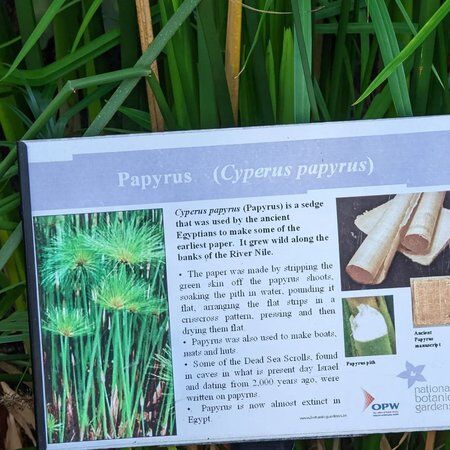
By using good horticulture practice (and labels) when displaying the different species and keeping their collections catalogue updated, the National Botanic Gardens hopes to inspire its visitors to get creative in their own gardens.
These plants are presented across the Gardens, inside the glasshouses, and within the following exhibits:
- The Sensory Garden
- The Rockery
- The Herbaceous Border
- The Carpet Beds
- The Rose Garden
- The Yew Walk
- The Arboretum
- The Fruit and Vegetable Garden
The National Herbarium
Containing almost 750,000 dried and documented plant specimens, gathered from around the globe, the National Herbarium is vital to the study of plant distribution, diseases, climate change, and much more. It even has a DNA research laboratory.
It is also home to the Economic Botany Collection, which among other things explores how plants have influenced and shaped humanity.
Herbarium in Focus, a free exhibition opened on 3rd October 2019, demonstrates the significance of herbariums to our understanding of the environment as an important natural resource.
Our thoughts...
The National Botanic Gardens has one overarching mission; to convey the importance of plants. And it achieves this by making exhibitions, like Herbarium in Focus free for its visitors and also putting on free self-guided tours, VR tours, guided tours, and offering gardening lessons and other classes.
Undoubtedly the National Botanic Gardens are a stimulating, vibrant, educational experience for all visitors.

Want to learn more about Dublin and see some of its secret & hidden sights? Check out our Dublin Treasure Hunts, puzzle-filled urban adventures lead you through city highlights and best-kept secrets. You'll actively engage with your surroundings to unravel the clues sent directly to your phones. Take optional breaks at great cafes & pub stops and enjoy the city's finest.








